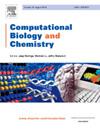基因表达谱揭示结肠癌预后和治疗靶点,结合对接和动力学研究发现有效的抗癌抑制剂。
IF 2.6
4区 生物学
Q2 BIOLOGY
引用次数: 0
摘要
耐药性是有效治疗结直肠癌(CRC)的主要障碍,结直肠癌是美国最常见的致人死亡的癌症之一。即使在化疗和靶向治疗方面取得进展,晚期结直肠癌患者也经常因疾病而死亡。开发新的生物标志物和治疗靶点对提高预后和治疗效果至关重要。我在这项研究中的目标是利用微阵列数据的生物信息学分析来寻找可能的结直肠癌生物标志物和治疗靶点。使用ArrayExpress数据库,我检查了一个关于结肠癌的数据集,以找到肿瘤组织与健康组织中差异表达的基因(DEGs)。先进的生物信息学工具的集成为EGFR的识别和分析提供了强有力的见解。STRING和Cytoscape实现了蛋白相互作用网络的构建和可视化,突出了EGFR作为枢纽基因的中心地位和相互作用特征。通过DAVID进行的功能富集分析揭示了EGFR参与关键的生物学途径,正如GO和KEGG分析所确定的那样。这强调了结合计算工具发现重要生物标志物(如EGFR)的力量。Autodock Vina筛选NCI多样性数据集确定了两种潜在的EGFR抑制剂ZINC13597410和ZINC04896472。MD模拟数据显示ZINC04896472可能是潜在的抗癌抑制剂。这些发现为开发针对结直肠癌中EGFR和其他已发现通路的新治疗方法奠定了基础。建议的策略可能会提高CRC治疗的疗效,并推进个体化治疗。本文章由计算机程序翻译,如有差异,请以英文原文为准。
Gene expression profiling to uncover prognostic and therapeutic targets in colon cancer, combined with docking and dynamics studies to discover potent anticancer inhibitor
Drug resistance poses a major obstacle to the efficient treatment of colorectal cancer (CRC), which is one of the cancers that kill people most often in the United States. Advanced colorectal cancer patients frequently pass away from the illness, even with advancements in chemotherapy and targeted therapies. Developing new biomarkers and therapeutic targets is essential to enhancing prognosis and therapy effectiveness. My goal in this study was to use bioinformatics analysis of microarray data to find possible biomarkers and treatment targets for colorectal cancer. Using an ArrayExpress database, I examined a dataset on colon cancer to find genes that were differentially expressed (DEGs) in tumor versus healthy tissues. Integration of advanced bioinformatics tools provided robust insights into the identification and analysis of EGFR as a key player. STRING and Cytoscape enabled the construction and visualization of protein-protein interaction networks, highlighting EGFR as a hub gene due to its centrality and interaction profile. Functional enrichment analysis through DAVID revealed EGFR’s involvement in critical biological pathways, as identified in GO and KEGG analyses. This underscores the power of combining computational tools to uncover significant biomarkers like EGFR. Autodock Vina screening of the NCI diversity dataset identified two potential EGFR inhibitors, ZINC13597410 and ZINC04896472. MD simulation data revealed that ZINC04896472 could be potential anticancer inhibitor. These findings serve as a basis for the creation of novel therapeutic approaches that target EGFR and other discovered pathways in CRC. The suggested strategy may improve the efficacy of CRC therapy and advance personalized medicine.
求助全文
通过发布文献求助,成功后即可免费获取论文全文。
去求助
来源期刊

Computational Biology and Chemistry
生物-计算机:跨学科应用
CiteScore
6.10
自引率
3.20%
发文量
142
审稿时长
24 days
期刊介绍:
Computational Biology and Chemistry publishes original research papers and review articles in all areas of computational life sciences. High quality research contributions with a major computational component in the areas of nucleic acid and protein sequence research, molecular evolution, molecular genetics (functional genomics and proteomics), theory and practice of either biology-specific or chemical-biology-specific modeling, and structural biology of nucleic acids and proteins are particularly welcome. Exceptionally high quality research work in bioinformatics, systems biology, ecology, computational pharmacology, metabolism, biomedical engineering, epidemiology, and statistical genetics will also be considered.
Given their inherent uncertainty, protein modeling and molecular docking studies should be thoroughly validated. In the absence of experimental results for validation, the use of molecular dynamics simulations along with detailed free energy calculations, for example, should be used as complementary techniques to support the major conclusions. Submissions of premature modeling exercises without additional biological insights will not be considered.
Review articles will generally be commissioned by the editors and should not be submitted to the journal without explicit invitation. However prospective authors are welcome to send a brief (one to three pages) synopsis, which will be evaluated by the editors.
 求助内容:
求助内容: 应助结果提醒方式:
应助结果提醒方式:


